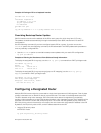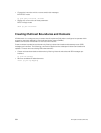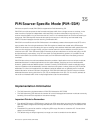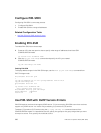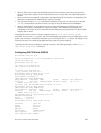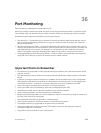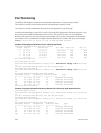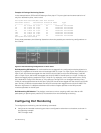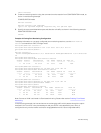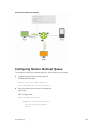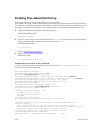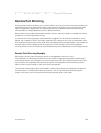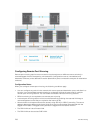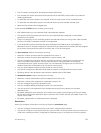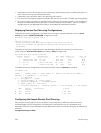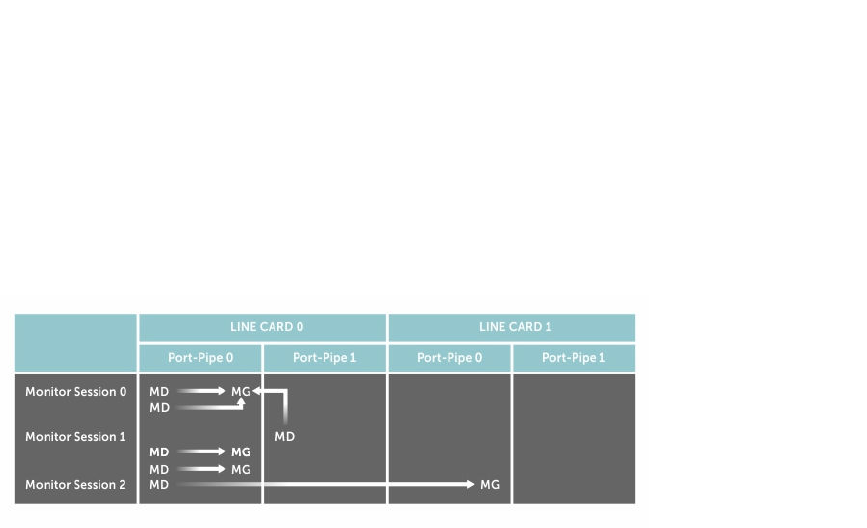
Example of Viewing a Monitoring Session
In the example below, 0/25 and 0/26 belong to Port-pipe 1. This port-pipe has the same restriction of
only four destination ports, new or used.
Dell(conf-mon-sess-300)#do show mon session
SessionID Source Destination Direction Mode Type
--------- ------ ----------- --------- ---- ----
0 Te 1/13/1 Te 1/1/1 rx interface Port-based
10 Te 1/14/1 Te 1/2/1 rx interface Port-based
20 Te 1/15/1 Te 1/3/1 rx interface Port-based
30 Te 1/16/1 Te 1/7/1 rx interface Port-based
100 Te 1/25/1 Te 1/8/1 tx interface Port-based
110 Te 1/26/1 Te 1/9/1 tx interface Port-based
300 Te 1/17/1 Te 1/1/1 tx interface Port-based
Dell(conf-mon-sess-300)#
Given these parameters, the following illustration shows the possible port monitoring configurations on
the S-Series.
Figure 94. Port Monitoring Configurations on the S-Series
Dell Networking OS Behavior: All monitored frames are tagged if the configured monitoring direction is
egress (TX), regardless of whether the monitored port (MD) is a Layer 2 or Layer 3 port. If the MD port is a
Layer 2 port, the frames are tagged with the VLAN ID of the VLAN to which the MD belongs. If the MD
port is a Layer 3 port, the frames are tagged with VLAN ID 4095. If the MD port is in a Layer 3 VLAN, the
frames are tagged with the respective Layer 3 VLAN ID. For example, in the configuration source TeGig
6/1/1 destination TeGig 6/2/1 direction tx, if the MD port TenGig 6/1/1 is an untagged member of any
VLAN, all monitored frames that the MG port TeGig 6/2/1 receives are tagged with the VLAN ID of the MD
port. Similarly, if BPDUs are transmitted, the MG port receives them tagged with the VLAN ID 4095. This
behavior might result in a difference between the number of egress packets on the MD port and
monitored packets on the MG port.
Dell Networking OS Behavior: The platform continues to mirror outgoing traffic even after an MD
participating in spanning tree protocol (STP) transitions from the forwarding to blocking.
Configuring Port Monitoring
To configure port monitoring, use the following commands.
1. Verify that the intended monitoring port has no configuration other than no shutdown, as shown in
the following example.
EXEC Privilege mode
Port Monitoring
701



